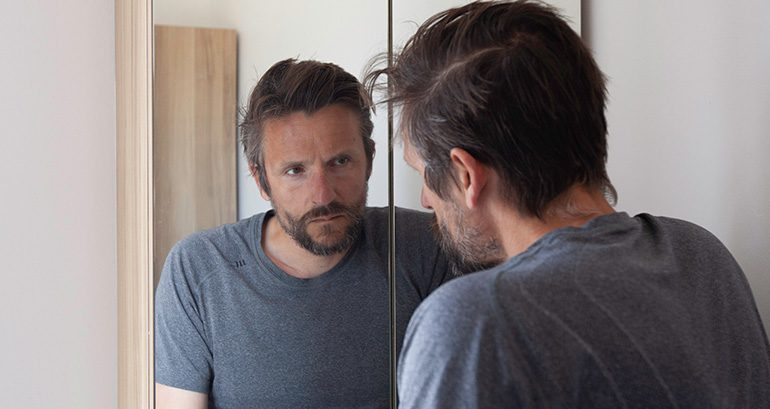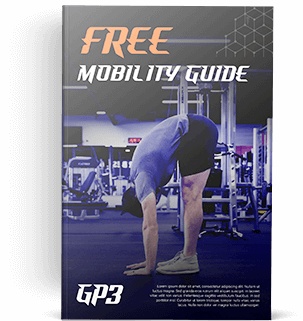Key Points:
- Women have historically faced much more pressure than men to look a certain way, but social media has started to increase expectations on men, too.
- However, unlike with the backlash against ultra-thin female models in the 1990’s, society still celebrates a male physique that’s “unhealthy” and difficult to attain naturally.
- To protect our own mental health, we can remind ourselves of the unsustainable nature of certain physiques, catch ourselves making comparisons, and ask what we realistically want to sacrifice in pursuit of a certain aesthetic.
Estimated reading time: 6-12 minutes
Listen to this article on Spotify!
Watch the 1-minute video I made about this!
I don’t think it’s controversial to say that over the centuries, women have faced more pressure than men to look a certain way. However, the gap has narrowed a little bit in the past decade…and not in a good way. Normally, I’m all for more egalitarianism. But in this case, instead of objectifying women less, our society has started to place greater expectations on men to maintain a particular physique, and their mental health is suffering as a result.
I primarily blame social media for this, but we’ll cover that more in a minute. But first, some background.
Idealizing the Unsustainable
I grew up in the 1990’s and early 2000’s, the ultra-thin, “waif-like” physique was highly valued in women. Pressure to achieve this body type was correlated with a higher prevalence of eating disorders, and many women had particularly fraught relationships with their bodies. In the late 2000’s, something shifted (perhaps inspired by the rise in popularity of Keeping up with the Kardashians) and a more curvaceous body type was viewed as the ideal.
Unfortunately, it’s highly debatable whether this change was any better for women’s physical and mental health. No longer were you expected to be stick-thin, but you were still supposed to have a narrow waist with a slim and toned midsection, plus now you also needed to be busty with big, strong glutes. While this may have led to a reduction in the stigma around women gaining muscle and encouraged plenty to gain strength in the gym, it arguably created an even less attainable “ideal body type.”
So, a mixed bag, to say the least, but I do want to focus on one positive. There was a collective acknowledgement that the “Kate Moss-like” body probably wasn’t a healthy thing to aim for. Now, as I wrote in my very first blog post, defining health can be a fraught topic, and I’m not going to detail my entire philosophy here. But, for a quick summary, it’s based around one’s happiness, pain levels, desired physical abilities, and a lack of worrisome blood/metabolic markers. Many people will not meet any of these criteria if they try to maintain a body type that met the 90’s ideal, which is one the BMI scale would likely classify as “underweight.”
A Quick Aside on BMI
In some circles this is now common knowledge, but BMI was originally developed to be used population-wide, not to determine individual health. That’s part of why it’s so problematic that this metric has become such a prevalent standard. Additionally, BMI has a fairly shocking tolerance for weights at the low end of its “normal” classification. As of the time of this writing, I’m 5’11″, roughly 13% body fat, and hover around 185 pounds. I’d need to lose over fifty pounds to be considered “underweight” by this metric. At 133 pounds, I wouldn’t be “normal;” I’d probably be on death’s door.
The point is, while I’m not saying it’s impossible to be healthy and stick skinny, most people will be miserable and endangering their health if they try to aim for “underweight.”
So, it’s a good thing this physique stopped being celebrated in magazines.
Throughout Western society, the prevailing sentiment seemed to shift to something like this. “It’s totally fine if you look like this naturally, but if not, don’t try to aim for it. Your physical and mental health will suffer.”
In fact, while social media undoubtedly exacerbated the problem of declining mental health and worsening body image, it did provide an interesting counter. Accounts like this, this, and this started popping up, featuring fit, attractive women showcasing themselves in unposed and even highly “unflattering” photos. They explained and demonstrated how clothing, lighting, camera angles, filters, and even outright photo manipulation could be used to drastically alter one’s appearance.
It provided a highly helpful reminder that online, not all is what it seems. Not only that, even those women whose “perfect bodies” we idealize still have fat rolls, cellulite, thigh dimples, body hair, and any other “undesirable” trait that comes to mind. While there’s still a long way to go, that resources like this even exist for women is a huge step in the right direction.
Men are a little bit behind the curve here…
As I mentioned earlier, it’s a relatively new phenomenon for men to feel pressure to look a certain way. And again, I blame social media. Before the great jump to smartphones around 2013, a high level of exposure to lean, jacked male physiques simply didn’t exist. Even Chris Hemsworth didn’t look like Chris Hemsworth in 2010! Go ahead and Google it if you don’t believe me. He was almost 30 when he starred in Cabin in the Woods in the photo above. Clearly a super fit guy, but a far cry from the demigod he’s viewed as today.
In fact, prior to a decade ago, unless they were really into bodybuilding (an even more obscure hobby then than it is now), males simply didn’t have the same opportunity to develop body image issues. But now…oh boy are things different. If you spend 20 minutes on Instagram’s “Discover” page, you can find hundreds of accounts featuring a “bodybuilding show-ready” physique. And as I wrote a couple weeks ago about bell curves, the extreme ends of them have some truly results-skewing data points. But on social media, those at the extreme ends rise to the top.
With that in mind, it’s easy to be inundated with photos of people in the “physique top 1%,” to the point where we start to believe an appearance like this is relatively common. And I don’t blame anyone who falls for this trap. If we see 20 accounts per week featuring guys that look like movie stars, we conveniently forget that we may never see someone who looks like that during our everyday life. So, for a bit of practical mental health advice, it may be worth looking at which accounts consistently make you feel bad about yourself after viewing their content and hitting the “unfollow” button.
Even more concerning, there hasn’t yet been a pushback against the unsustainable nature of this type of male physique.
I’ll admit I don’t have much data to back this up at present, so please forgive my drawing of conclusions from anecdotes. But the general perception I get from many males is that a body type like this, with high amounts of muscle mass and total body fat under 10%, is one to be strived for and celebrated. It’s rarely mentioned that it’s not possible or even desirable to try to sustain that level of leanness year round, let alone without performance enhancing drugs. But, I did find one example of someone willing to talk about that. Let’s listen to the wise words of Rob McElhenney, star of It’s Always Sunny in Philadelphia, who went through multiple drastic transformations for the show.
First, he decided to gain 50 pounds for Season 7, because he didn’t like how sitcoms often seemed to unrealistically portray the characters looking physically “better” as time went on. This was obviously due to the improved financial situations of their real-life counterparts, but he wanted to take a stand anyway.
In quite an impressive display of commitment to his art, he did indeed gain 50 pounds to go from lean and fit to obese in a matter of months. By two years later, he’d lost just about all of the weight he gained, but he wasn’t finished. For season 13, he underwent another drastic transformation, adding significant amounts of muscle mass and by my estimation, dropping to around 7% body fat.
Tongue firmly in cheek, here’s what he had to say about his transformation:
Look, it’s not that hard. All you need to do is lift weights six days a week, stop drinking alcohol, don’t eat anything after 7pm, don’t eat any carbs or sugar at all, in fact just don’t eat anything you like, get the personal trainer from Magic Mike, sleep nine hours a night, run three miles a day, and have a studio pay for the whole thing over a six to seven month span. I don’t know why everyone’s not doing this. It’s a super realistic lifestyle and an appropriate body image to compare oneself to. #hollywood
His last sentence makes an excellent point.
Yes, it’s a bit of a cliche, but comparison is the thief of joy. We engage in it at our peril. As I wrote a couple weeks ago about money, the question, “What is enough for me, personally?” applies perfectly here. If the answer is, “I won’t rest until I look like Thor,” it may be time to ask some more questions. Do you have access to resources like PEDs, the necessary food, and the time and energy to commit to such a goal? If so, great! If not, you may need to adjust your definition of “enough.”
This may be a controversial point, even though it shouldn’t be. I believe that for the mental health of men everywhere, it may be time for the “Thor Body” to receive the same treatment as the “Kate Moss Waif Body,” of the 1990’s. To be clear, this doesn’t mean it should be demonized, just that it should no longer be held up as a standard worth striving for and celebrating. To that end, imagine a comment like this on a petite woman’s posts today. “Girl, you’re looking so good and skinny I can see your ribs!” Or a tabloid headline that declared, “Margot Robbie now weighs under 100 pounds and looks AMAZING!”
These sound incredibly tone deaf, right? This is because, as a society, we’ve generally decided to stop explicitly celebrating a female body type that can lead to disordered eating and obsessive behaviors. Well, maybe. Apparently, this body type is “back in” due to Ozempic, as if the desirable female physique is little more than a trendy cut of jeans. But we’ll dive way deeper into Ozempic next week.
In the meantime, I can only hope we take a lesson from the pushback against featuring “heroin-chic” models in all forms of media. Maybe we’ll start doing the same with male builds that aren’t meant to be sustained for longer than it takes to film a movie. Pressuring men to look like that probably wasn’t the ideal way to level the “body image issues playing field.” Normally, I’m all for egalitarianism, but in this case, we goofed.
So, maybe we’ll take it one step further, and start objectifying both men and women at least a little bit less. Hey, a guy can dream, right?
Before you go, I’d love to hear from you. Do you think there’s any chance we stop celebrating unsustainable body types altogether, or are we too conditioned to view them as “attractive?” If there’s a chance, how should we start going about it? Reply to this email and let me know!

